Between algorithm updates, machine learning, and E.A.T—SEOs have an awful lot on their plate. Multitudes of “how-to” guides come out every year, each one claiming to have the key to the top of the SERP. But trends like these often fizzle away quicker than the Medic update rolled out. That leaves you looking for a long-term SEO strategy.
In this guide, I’ll talk you through some of the most successful SEO techniques I’ve used for content creation. In 10 minutes time, you’ll know all about:
Let’s dive into them…
The 5 SEO tactics you need under your belt
1. Performance SEO
This one is arguably the most common type of SEO—and we’re all striving to master it. It’s all about creating and optimising content to hit certain metrics. The most important KPI here is never engagement. Your main goal is to increase key funnel conversion metrics such as signups, activations, and customers.
Ready to start with Performance SEO? You’ll need a holistic content plan mapped out, not just the keywords you’re aiming to hit. Also, you’ll need to work out the intent of your buyer personas and have industry benchmarks for your funnel ready too.
A simple way to map content by intent stage—at least for the top of your funnel, is to use customer awareness stages. Using Typeform as an example, I’ve mapped out the intents:
| Stage | Meaning | Example Keywords |
| Problem-Aware | These are searchers who know they have a problem, but they don’t know how to solve that problem—or don’t completely understand it yet. Therefore, they’re unfamiliar with possible solutions. | how to grow my business
best survey questions |
| Solution-Aware | These are the searchers who know what solution they’re looking for but don’t know about your specific product or service. | form builder
survey tool |
| Product-Aware | These are searchers who already know your product exists but haven’t bought it yet. They’re not sure if your solution is the best choice for them yet. | Typeform reviews
Typeform pricing |
After you’ve mapped out existing content and future plans by intent, find the average conversion rates by intent for your own business. To do this, you’ll need to dig into existing content using your analytics tool of choice—Google Analytics, Amplitude, Mixpanel, or simply your own database.
Here’s an example of what those rates might look like:
| Content | Stage | Visit-> Sign up % | Sign up-> Pay % |
| Free Stock Photo Websites | Problem-Unaware | 0.75% | 1% |
| Best Survey Questions | Problem-Aware | 3% | 3% |
| Survey Tool | Solution-Aware | 30% | 6% |
Lastly, with this SEO technique, use a tool like Ahrefs to find how much monthly traffic the top piece of content gets for your main keywords so you can estimate the impact:
| Content | Stage | Top content monthly traffic | Visit-> Sign up % | Monthly Signups | Sign up-> Pay % | Monthly Customers |
| How to grow my business | Problem-Aware | 7,500 | 3% | 225 | 3% | 7 |
| Best Survey Questions | Problem-Aware | 8,000 | 3% | 240 | 3% | 7 |
| Survey Tool | Solution-Aware | 2,000 | 30% | 600 | 6% | 36 |
Psst. This table’s data is 100% dummy. But it’s a super simple example of how you can build a content plan based on your business’ funnel metrics and then prioritise content for maximum impact. Of course, there are many other metrics to take into account such as keyword difficulty, topic authority, etc. But it’s a great way to estimate the impact of your content.
2. Robin Hood SEO
This type of SEO is all about, you’ve guessed it, stealing from the rich and giving to the poor. By rich, I mean websites with a lot of traffic—and we’re the poor here!
So, there are two main ways to do this:
1. Steal your competitor featured snippets
Google shows featured snippets for roughly 12% of queries and 8.6% of all clicks go to the snippet pages. That’s a pretty significant chunk of traffic your website could be getting.
But you’re not alone in this one. You can use a tool like Ahrefs to research what featured snippets your competitors have—and plot how to get them.
In the example below, you can see some of the keywords Wix currently has featured snippets for:
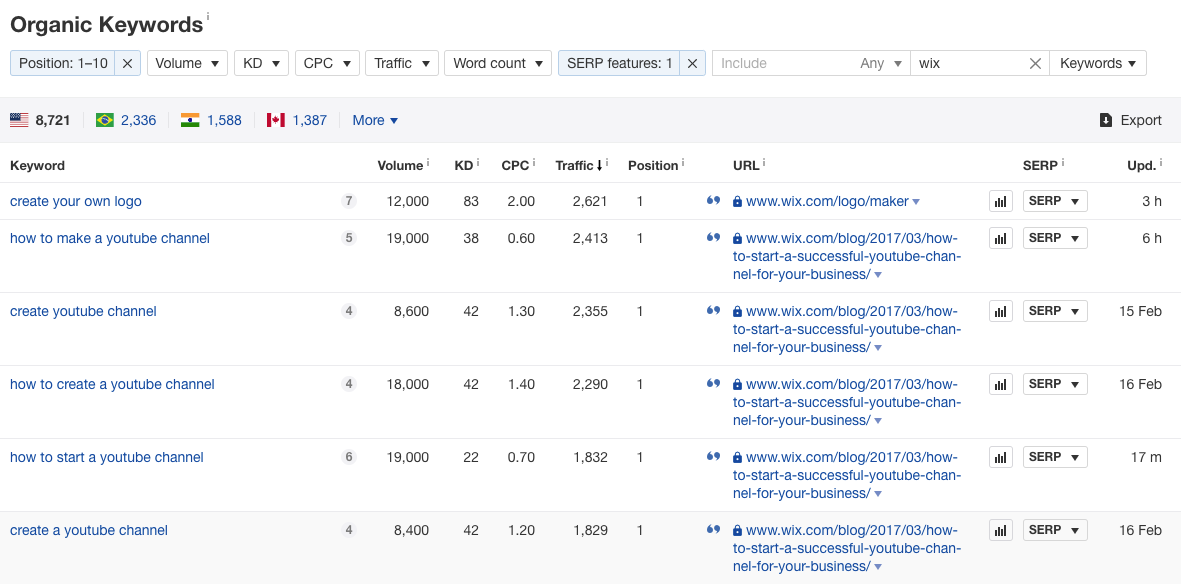
All you have to do now is find your competitors’ featured snippets and start planning how to snatch them up.
Need a bit more inspiration? Check out this great guide by Ahrefs on how to steal your competitors’ feature snippets.
2. Rank for your competitors’ brand names
Right, this SEO tactic is a bit more aggressive, but it lets you find qualified traffic for your website.
Some companies, Zapier included, use this tactic when there’s little to no search volume for their product.
Below, you can see the keywords that Zapier are ranking for:
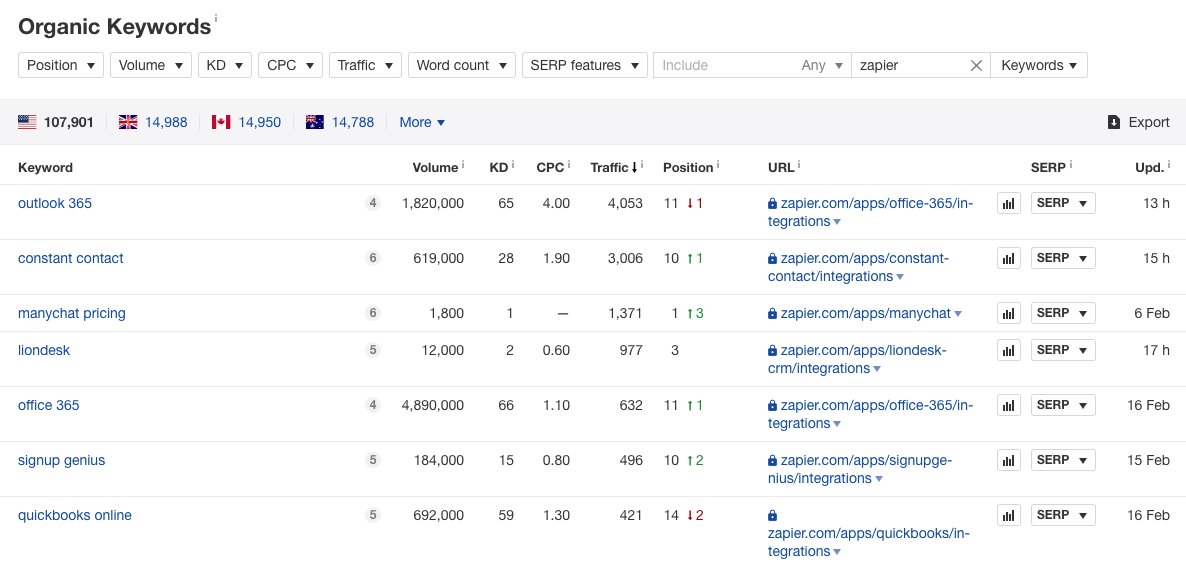
And here’s one of their landing pages:
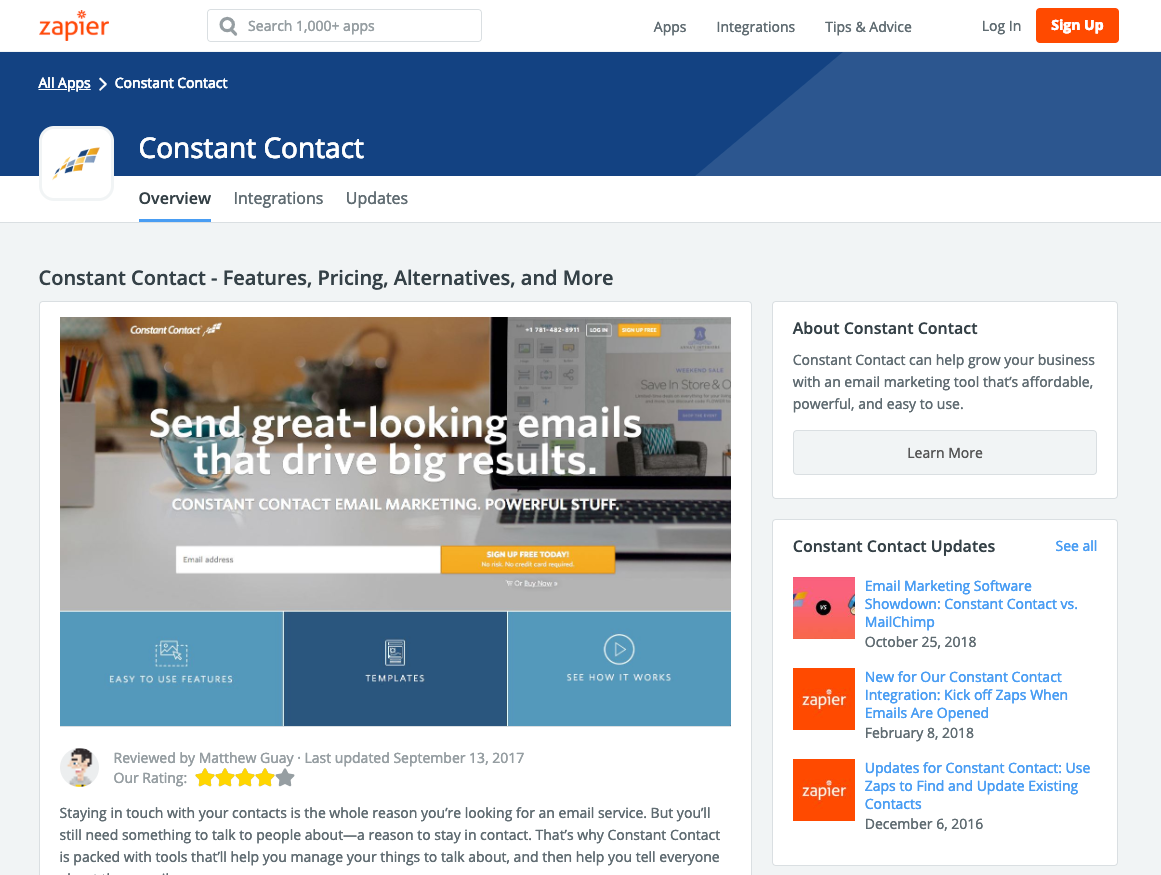
So how do they do it?
When you dive into their SEO strategy, their “competitor pages” content follows this structure:
| Page Type | Purpose |
| Overview | Rank for brand terms related to features & pricing
E.g. “Constant Contact features”, “Constant Contact pricing” |
| Integrations | Rank for exact match brand term, and brand term + integrations
E.g. “Constant Contact”, “Constant Contract integrations” |
| Versus | Rank for comparison terms between two brands.
E.g. “Gravity Forms Constant Contact” |
But that’s not all. When they work with new integration partners they gain backlinks. Why? Because Zapier ask them to:
- Write a blog post announcing their integration with Zapier
- Set up an integrations page on their website
- Add links to a few top “zaps” directly from their app
Check out more SaaS link building tactics here.

3. Database SEO
This third SEO tactic is all about dynamically building content, based on a database of information that you already have at your fingertips.
Look at Ancestry.com. They used Database SEO and created a massive 4,000,000 pages from their own database of historical records. These records now bring in 2.9 million new monthly visitors to their website. If they had to pay for this traffic, it would cost them around $500,000 per month. Nice.
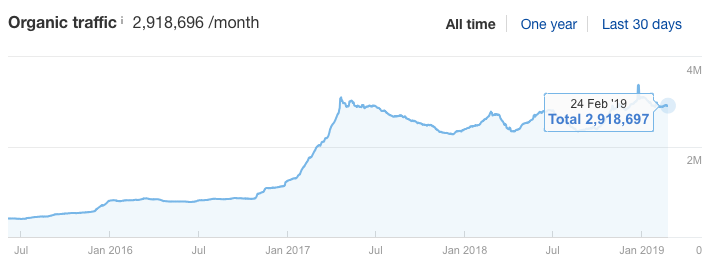
They rank for 4,000,000 surnames by creating unique pages that capture searchers who are looking to find out more about the meaning behind their name.
Below you can see what these pages look like:
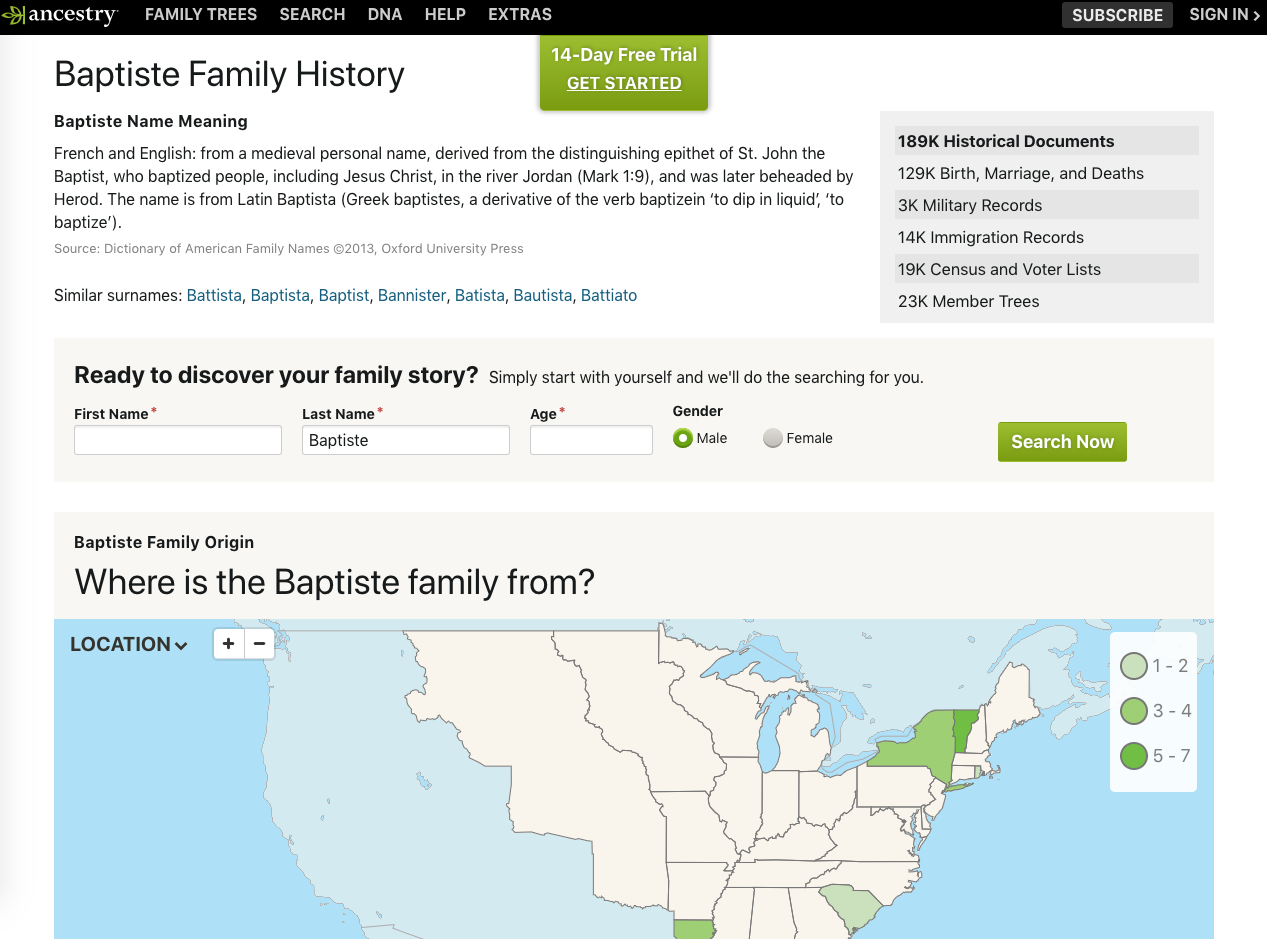
See that “similar surnames” section they have near the top? That’s for their internal linking strategy—it means that Google can crawl millions of their pages with ease. Now this one is the best thing about Ancestry’s SEO strategy. Because their database is continually growing in size, they’ve created a self-growing SEO machine.
Now, does your business have a database of information? Have a think about what keywords you could be ranking for.
Here are some ideas of pages you could make using Database SEO:
- An app/integration directory—Slack’s App Directory gets 122k monthly organic visitors
- A dictionary/glossary—Shopify’s Encyclopedia gets 261k monthly organic visitors
- A theme/template directory—Wix’s template gallery gets 268k monthly organic visitors
But of course, it all depends on your unique business model.
4. Mashup SEO
My fourth SEO strategy is all about using APIs. With Mashup SEO, you use multiple APIs, or web scrapers, to create dynamic web pages on the fly. Therefore it’s the opposite to Database SEO as you’re using data from other providers instead of your own.
If you’re learning another language, you’ve probably bumped into a website called Linguee when looking for a translation. Linguee scrapes the internet to find translated webpages in order to show you how to translate a word or phrase (as opposed to using a machine or an algorithm for translation).
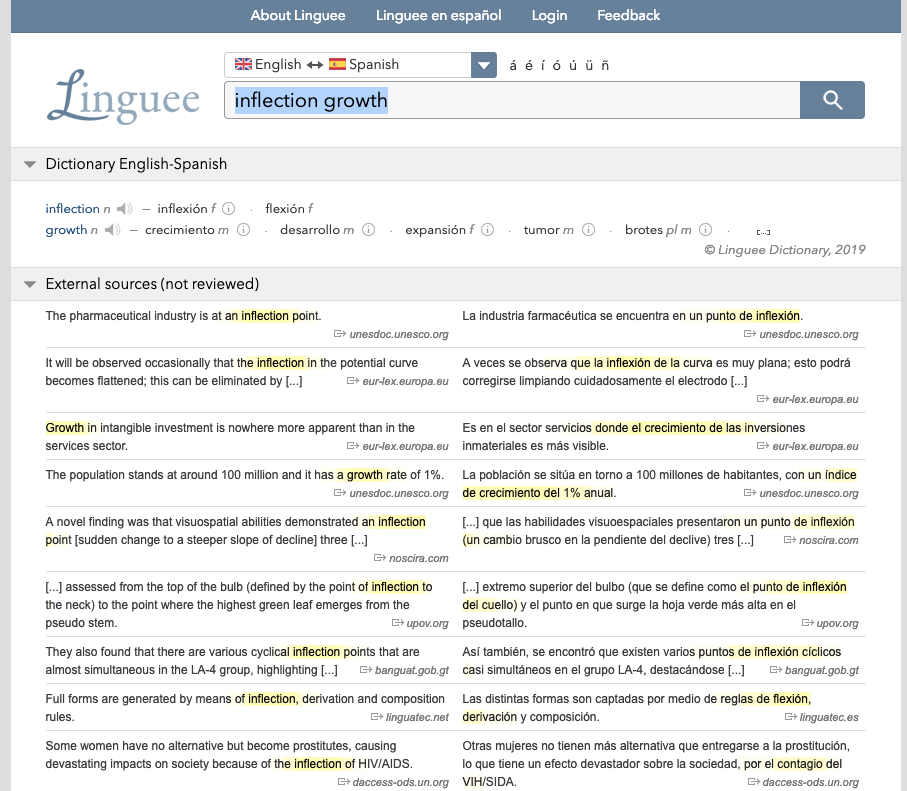
Their .com website receives well over 12 million new visitors per month from organic search, and that’s growing rapidly MoM:
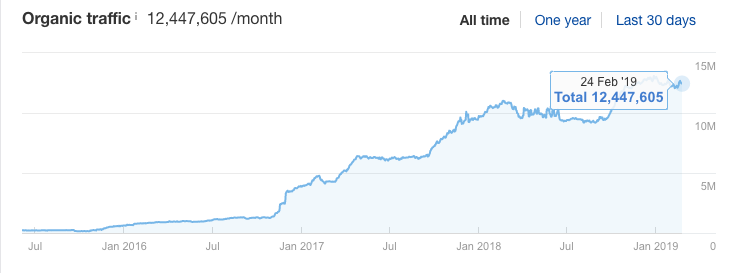
Just think about what you could do with a handful of APIs to build custom pages. Here are a few ideas for you:
- ClearBit -> get company information such as size, tech stack, industry, and more
- BuzzSumo -> build news or resource pages on given subjects
- Twitter -> search for Tweets on a given topic, or create statistics on different topics
Are you creating scalable SEO pages through leveraging machines and 3rd party data 🤖?
5. Brand SEO
Onto my final SEO tactic, and this one’s all about your brand. When we purely focus on Performance SEO, we’re missing out on other touch points we can have with our prospects towards the top of the funnel. We’re missing out on content that can engage our prospects—because on average it takes at least seven touches with your brand until a prospect takes action.
Brand SEO refers to content that ranks in Google with the aim to increase brand awareness so that when your future customer is making a search further down the awareness funnel, they choose your brand instead of a competitor. Why? They remember your brand and they prefer your messaging.
Generally, this type of SEO is overlooked by businesses, but it will start gain traction as typical customer acquisition channels mature and bring diminishing returns (think Paid Search where CPCs have increased more than 40% in the previous 12 months).
For some Brand SEO inspiration, let’s look to Typeform. They rank for content that’s aimed to engage with their key personas, instead of being created to simply have a direct response.
The following blog posts gets 9,000 visitors per month by ranking #7 for “free pics”:

Typeform understand that to grow a brand and impact their direct response marketing, these brand touch points through search are critical.
Are you putting all your eggs into Performance SEO or are you also investing in Brand SEO?
What types of SEO are you using in your business to drive growth? Let me know in the comments below.


Jose de Blas
Nice reading!